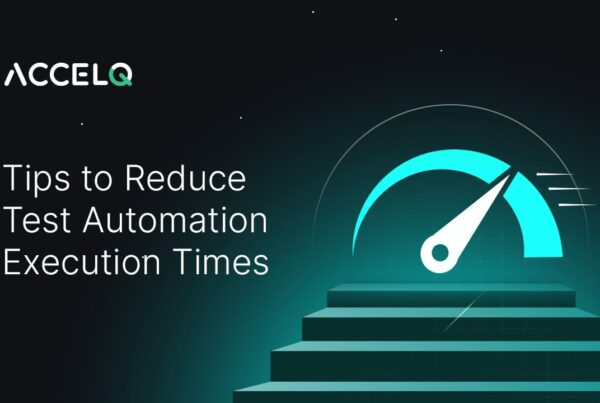How to Succeed with In-Sprint Automation: 7 Rules for Agile Teams

In the world of Agile & DevOps, in-sprint automation is no longer a buzzword but a backbone of the testing process. Developers are constantly being asked to produce great code every sprint, without compromising speed or innovation. QA needs to move towards the left in order to achieve this, making test automation part of the sprint cycle.
Yet, transitioning to in-sprint automation isn’t straightforward. The journey involves more than tools—teams need the right mindset, strategy, and scalable infrastructure.
This blog unpacks the essential in-sprint automation best practices that help teams eliminate waste, accelerate test cycles, and ship quality software confidently, within the same sprint.
Key Takeaways
- In-sprint automation involves creating and executing tests within the same sprint.
- It reduces manual effort, boosts speed, and aligns QA with DevOps.
- Use layered automation (UI, API, backend) and prioritize reusable test assets.
- Success requires strategy, tool integration, and team-wide alignment.
- What Is In-Sprint Automation?
- How Can QA Be Embedded Across the Sprint Lifecycle?
- Why Is Test Coverage Visibility Critical in Agile?
- How Can Virtualization Help In-Sprint Automation?
- Why Should You Automate Beyond the UI Layer?
- What Kind of Test Design Works Best In-Sprint?
- How Should You Use Frameworks for Agile Automation?
- Why Is Centralized Test Asset Management Important?
- How Many Test Cases Can Be Automated In-Sprint?
- Benefits of In-Sprint Automation
- Common In-Sprint Automation Challenges
- Conclusion
What Is In-Sprint Automation?
In-sprint automation is the process of building, executing, and reporting automated tests within the same sprint in which a feature is developed. This includes test case planning, creation, validation, and regression runs delivering rapid feedback loops and enabling true agile coverage.
Unlike traditional methods that defer automation to later cycles, in-sprint automation tightly aligns QA efforts with development, reducing technical debt and preventing bottlenecks. But the shift isn’t automatic. It demands strategic planning, efficient tooling, and collaborative execution.
So, how do you make it work?
Let’s explore the best practices for in-sprint test automation strategy that leading QA teams are adopting across fast-moving enterprise environments.
1. How Can QA Be Embedded Across the Sprint Lifecycle?
One of the key in-sprint automation challenges is siloed responsibility. When automation is owned by a separate team or delayed until after development, it loses context and velocity.
To succeed, QA must be fully embedded in the sprint, from backlog refinement to final release. This ensures early identification of test scenarios, collaborative automation planning, and faster turnaround.
🔍 Pro tip: Involve QA in user story grooming and define automation-ready acceptance criteria upfront.
2. Why Is Test Coverage Visibility Critical in Agile?
A common gap in in-sprint automation lies in partial visibility into test coverage. Critical automation often slips through the cracks without clear dashboards or ownership models.
Make automation efforts visible. Track sprint test coverage, defects, and automation readiness through dashboards that everyone can access, from product owners to release leads.
This transparency reduces rework, clarifies ownership, and supports continuous improvement.
3. How Can Virtualization Help In-Sprint Automation?
When dependencies stall test development, teams lose momentum. To maintain speed, embrace abstraction and service virtualization for backend components and third-party integrations.
This strategy enables modular test creation, early validation, and parallel execution across microservices. It also ensures test environments don’t become blockers for sprint success.
💡 This is a critical pillar of a scalable in-sprint automation process.
4. Why Should You Automate Beyond the UI Layer?
Today’s enterprise apps span UI, APIs, databases, mobile, and backends. Limiting automation to the UI layer results in fragile, incomplete testing.
Instead, automate the service, data, and integration layers. Extend your coverage to API workflows, asynchronous queues, and composite transactions. Tools like ACCELQ simplify this with codeless automation across the stack.
🌐 This approach reduces test flakiness and aligns with CI/CD maturity.
5. What Kind of Test Design Works Best In-Sprint?
Test case volume is a vanity metric. What matters is how many test cases can be automated in-sprint with maximum impact.
Shift focus to test design quality—prioritize modular, reusable assets that validate business logic thoroughly. Use boundary value analysis and risk-based prioritization to guide what should be automated first.
🛠 A smart test asset strategy reduces maintenance and improves long-term ROI.
6. How Should You Use Frameworks for Agile Automation?
A robust automation framework is essential, but don’t let it become a bottleneck. Frameworks should enable flexibility, not impose rigidity.
Use frameworks as foundational scaffolds. Then build domain-specific layers, custom utilities, and plugins that reflect your team’s needs. This ensures your automation adapts to evolving tools, platforms, and sprint goals.
🎯 Think of it as a launchpad—not a limiting box.
7. Why Is Centralized Test Asset Management Important?
While execution should be distributed across squads, test assets must be managed centrally. This ensures governance, reuse, and access control.
Define role-based permissions so teams can access only what’s relevant. This eliminates duplication, enforces consistency, and supports secure collaboration across QA, Dev, and Product teams.
✅ This governance-first model streamlines large-scale in-sprint automation.
Ready to transform your sprint cycles with smarter automation?
Join Fortune 500 teams using ACCELQ to deliver faster, better, and scalable quality.
👉 [Book a demo]
How Many Test Cases Can Be Automated In-Sprint?
There’s no one-size-fits-all number, but aiming for 60–80% automation of critical test cases within the same sprint is an achievable benchmark for mature agile teams.
However, quantity shouldn’t be the primary metric. Instead, focus on:
- Automation Readiness: Prioritize test cases tied to well-defined, stable user stories.
- Risk & Impact: Automate high-risk, high-value scenarios first, especially those that affect critical user workflows or integrations.
- Execution Time: Target short-running, reusable tests that contribute to CI feedback loops.
- Cross-Layer Coverage: Include unit, API, and functional flows—avoid UI-only automation where possible.
Benefits of In-Sprint Automation
Here’s a quick look at the measurable value teams gain:
- Reduces manual testing effort by up to 72%
- Speeds up release cycles across channels (Web, API, Mobile)
- Enhances real-time test alignment with fast-changing features
- Improves regression stability from sprint to sprint
- Simplifies continuous integration adoption
- Enables business process-focused automation
Common In-Sprint Automation Challenges
Despite the advantages, challenges remain:
- Keeping up with evolving requirements
- Synchronizing automation with user story readiness
- Scaling test coverage across platforms
- Managing flaky or unstable test environments
- Aligning QA skills with full-stack test needs
- Getting stakeholder buy-in for tool investments
Tackling these requires both strategy and tooling. With platforms like ACCELQ, teams can achieve automation that’s not just fast but smart, scalable, and resilient.
Conclusion
In-sprint automation is no longer aspirational; it’s expected. Enterprises looking to stay competitive must transition from reactive QA to proactive, in-sprint testing models. But success depends on more than just speed; it demands design, discipline, and visibility.
By following these best practices, you lay the foundation for automation that scales with your agile transformation and delivers measurable ROI.
Suggested Watch:
Prashanth Punnam
Sr. Technical Content Writer
With over 8 years of experience transforming complex technical concepts into engaging and accessible content. Skilled in creating high-impact articles, user manuals, whitepapers, and case studies, he builds brand authority and captivates diverse audiences while ensuring technical accuracy and clarity.
You Might Also Like:
 Static Testing vs Dynamic Testing: Key Differences
Static Testing vs Dynamic Testing: Key Differences
Static Testing vs Dynamic Testing: Key Differences
 Tips To Reduce Test Automation Execution Times
Tips To Reduce Test Automation Execution Times
Tips To Reduce Test Automation Execution Times
 Streamline QA Automation with ACCELQ: A Detailed Insight
Streamline QA Automation with ACCELQ: A Detailed Insight
































